- Home
- H. G. Wells
The Country of the Blind and other Selected Stories Page 47
The Country of the Blind and other Selected Stories Read online
Page 47
Nevermore.
Precipitate start of the Wild Ass hunters.
Appendix
H. G. WELLS’S INTRODUCTION TO THE COUNTRY OF THE BLIND AND OTHER STORIES (1911)
The enterprise of Messrs T. Nelson & Sons and the friendly accommodation of Messrs Macmillan render possible this collection in one cover of all the short stories by me that I care for anyone to read again. Except for the two series of linked incidents1 that make up the bulk of the book called Tales of Space and Time, no short story of mine of the slightest merit is excluded from this volume. Many of very questionable merit find a place; it is an inclusive and not an exclusive gathering. And the task of selection and revision brings home to me with something of the effect of discovery that I was once an industrious writer of short stories, and that I am no longer anything of the kind. I have not written one now for quite a long time, and in the past five or six years I have made scarcely one a year. The bulk of the fifty or sixty tales from which this present three-and-thirty have been chosen dates from the last century. This edition is more definitive than I supposed when first I arranged for it. In the presence of so conclusive an ebb and cessation an almost obituary manner seems justifiable.
I find it a little difficult to disentangle the causes that have restricted the flow of these inventions. It has happened, I remark, to others as well as to myself, and in spite of the kindliest encouragement to continue from editors and readers. There was a time when life bubbled with short stories; they were always coming to the surface of my mind, and it is no deliberate change of will that has thus restricted my production. It is rather, I think, a diversion of attention to more sustained and more exacting forms. It was my friend Mr C. L. Hind2 who set that spring going. He urged me to write short stories for the Pall Mall Budget, and persuaded me by his simple and buoyant conviction that I could do what he desired. There existed at the time only the little sketch, ‘The Jilting of Jane’,3 included in this volume – a t least, that is the only tolerable fragment of fiction I find surviving from my pre-Lewis-Hind period. But I set myself, so encouraged, to the experiment of inventing moving and interesting things that could be given vividly in the little space of eight or ten such pages as this, and for a time I found it a very entertaining pursuit indeed. Mr Hind’s indicating finger had shown me an amusing possibility of the mind. I found that, taking almost anything as a starting-point and letting my thoughts play about it, there would presently come out of the darkness, in a manner quite inexplicable, some absurd or vivid little incident more or less relevant to that initial nucleus. Little men in canoes upon sunlit oceans would come floating out of nothingness, incubating the eggs of prehistoric monsters unawares; violent conflicts would break out amidst the flower-beds of suburban gardens; I would discover I was peering into remote and mysterious worlds ruled by an order logical indeed but other than our common sanity.
The ’nineties was a good and stimulating period for a short-story writer. Mr Kipling4 had made his astonishing advent with a series of little blue-grey books, whose covers opened like window-shutters to reveal the dusty sun-glare and blazing colours of the East; Mr Barrie had demonstrated what could be done in a little space through the panes of his Window in Thrums.5 The National Observer was at the climax of its career of heroic insistence upon lyrical brevity and a vivid finish, and Mr Frank Harris6 was not only printing good short stories by other people, but writing still better ones himself in the dignified pages of the Fortnightly Review. Longman’s Magazine, too, represented a clientele of appreciative short-story readers that is now scattered. Then came the generous opportunities of the Yellow Book, and the National Observer died only to give birth to the New Review.7 No short story of the slightest distinction went for long unrecognized. The sixpenny popular magazines had still to deaden down the conception of what a short story might be to the imaginative limitation of the common reader – and a maximum length of six thousand words. Short stories broke out everywhere. Kipling was writing short stories; Barrie, Stevenson, Frank Harris; Max Beerbohm wrote at least one perfect one, ‘The Happy Hypocrite’; Henry James8 pursued his wonderful and inimitable bent; and among other names that occur to me, like a mixed handful of jewels drawn from a bag, are [here Wells lists a further nineteen names]. I dare say I could recall as many more names with a little effort. I may be succumbing to the infirmities of middle age, but I do not think the present decade can produce any parallel to this list, or what is more remarkable, that the later achievements in this field of any of the survivors from that time, with the sole exception of Joseph Conrad,9 can compare with the work they did before 1900. It seems to me this outburst of short stories came not only as a phase in literary development, but also as a phase in the development of the individual writers concerned.
It is now quite unusual to see any adequate criticism of short stories in English. I do not know how far the decline in short-story writing may not be due to that. Every sort of artist demands human responses, and few men can contrive to write merely for a publisher’s cheque and silence, however reassuring that cheque may be. A mad millionaire who commissioned masterpieces to burn would find it impossible to buy them. Scarcely any artist will hesitate in the choice between money and attention; and it was primarily for that last and better sort of pay that the short stories of the ’nineties were written. People talked about them tremendously, compared them, and ranked them. That was the thing that mattered.
It was not, of course, all good talk, and we suffered then, as now, from the a priori critic. Just as nowadays he goes about declaring that the work of such-and-such a dramatist is all very amusing and delightful, but ‘it isn’t a Play’, so we had a great deal of talk about the short story, and found ourselves measured by all kinds of arbitrary standards. There was a tendency to treat the short story as though it was as definable a form as the sonnet, instead of being just exactly what anyone of courage and imagination can get told in twenty minutes’ reading or so. It was either Mr Edward Garnett or Mr George Moore10 in a violently anti-Kipling mood who invented the distinction between the short story and the anecdote. The short story was Maupassant;11 the anecdote was damnable. It was a quite infernal comment in its way, because it permitted no defence. Fools caught it up and used it freely. Nothing is so destructive in a field of artistic effort as a stock term of abuse. Anyone could say of any short story, ‘A mere anecdote’, just as anyone can say ‘Incoherent!’ of any novel or of any sonata that isn’t studiously monotonous. The recession of enthusiasm for this compact, amusing form is closely associated in my mind with that discouraging imputation. One felt hopelessly open to a paralysing and unanswerable charge, and one’s ease and happiness in the garden of one’s fancies was more and more marred by the dread of it. It crept into one’s mind, a distress as vague and inexpugnable as a sea fog on a spring morning, and presently one shivered and wanted to go indoors.… It is the absurd fate of the imaginative writer that he should be thus sensitive to atmospheric conditions.
But after one has died as a maker one may still live as a critic, and I will confess I am all for laxness and variety in this as in every field of art. Insistence upon rigid forms and austere unities seems to me the instinctive reaction of the sterile against the fecund. It is the tired man with a headache who values a work of art for what it does not contain. I suppose it is the lot of every critic nowadays to suffer from indigestion and a fatigued appreciation, and to develop a self-protective tendency towards rules that will reject, as it were, automatically the more abundant and irregular forms. But this world is not for the weary, and in the long-run it is the new and variant that matter. I refuse altogether to recognize any hard and fast type for the Short Story, any more than I admit any limitation upon the liberties of the Small Picture. The short story is a fiction that may be read in something under an hour, and so that it is moving and delightful, it does not matter whether it is as ‘trivial’ as a Japanese print of insects seen closely between grass stems, or as spacious as the prospect of the plain o
f Italy from Monte Mottarone.12 It does not matter whether it is human or inhuman, or whether it leaves you thinking deeply or radiantly but superficially pleased. Some things are more easily done as short stories than others and more abundantly done, but one of the many pleasures of short-story writing is to achieve the impossible.
At any rate, that is the present writer’s conception of the art of the short story, as the jolly art of making something very bright and moving; it may be horrible or pathetic or funny or beautiful or profoundly illuminating, having only this essential, that it should take from fifteen to fifty minutes to read aloud. All the rest is just whatever invention and imagination and the mood can give – a vision of buttered slides on a busy day or of unprecedented worlds. In that spirit of miscellaneous expectation these stories should be received. Each is intended to be a thing by itself; and if it is not too ungrateful to kindly and enterprising publishers, I would confess I would much prefer to see each printed expensively alone, and left in a little brown-paper cover to lie about a room against the needs of a quite casual curiosity. And I would rather this volume were found in the bedrooms of convalescents and in dentists’ parlours and railway trains than in gentlemen’s studies. I would rather have it dipped in and dipped in again than read severely through. Essentially it is a miscellany of inventions, many of which were very pleasant to write; and its end is more than attained if some of them are refreshing and agreeable to read. I have now re-read them all, and I am glad to think I wrote them. I like them, but I cannot tell how much the associations of old happinesses gives them a flavour for me. I make no claims for them and no apology; they will be read as long as people read them. Things written either live or die; unless it be for a place of judgement upon Academic impostors, there is no apologetic intermediate state.
I may add that I have tried to set a date to most of these stories, but that they are not arranged in strictly chronological order.13
NOTES
1. ‘A Story of the Stone Age’ and ‘A Story of the Days to Come’(not included in this volume).
2. Journalist and author C. Lewis Hind (1862–1927), editor of thePall Mall Budget (1893–5) and the Academy (1896–1903). Forthe Pall Mall Budget, see also note 8 to ‘The Remarkable Case of Davidson’s Eyes’.
3. Published in the Pall Mall Budget on 12 July 1894 (not included in this volume).
4. See note 9 to ‘The Moth’, and note 3 to ‘The Wild Asses of the Devil’.
5. A Window in Thrums (1889), an early ‘kailyard’ novel by Sir James Matthew Barrie (1860–1937).
6. Frank Harris (1856–1931) edited the Fortnightly Review (1886–94) and the Saturday Review (1894–8), for which Wells became chief fiction reviewer.
7. The Yellow Book (published 1894–7) quickly became notorious as the chief organ of the ‘Decadent’ school of writers and artists.‘ A Slip under the Microscope’ was Wells’s sole contribution to the journal. Both the National Observer and the New Review were edited by William Ernest Henley (1849–1903). Wells published an early version of The Time Machine as a serial in the National Observer. When the paper folded in 1894, Henley encouraged him to rewrite it at greater length, and serialized it in the New Review.
8. For Robert Louis Stevenson, see, note 8 to ‘The Moth’. Sir Max Beerbohm (1872–1956), essayist, caricaturist and author of the novel Zuleika Dobson (1911). Henry James, American novelist (1843–1916) who frequently met and corresponded with Wellsbetween 1898 and their quarrel in 1915. He wrote nearly 100 short stories.
9. Joseph Conrad (1857–1924) began his career as a novelist with Almayer’s Folly (1895), a book which Wells reviewed favourably in the Saturday Review. Conrad’s short stories include Tales of Unrest (1898) and the novella ‘Heart of Darkness’ (1899).
10. For Garnett and Moore, see note 3 to Introduction. Wells caricatured Moore, together with Henry James, in Boon (1915).
11. French novelist Guy de Maupassant (1850–93), one of the pioneers of the modern short story.
12. A mountain close to Lake Maggiore in northern Italy.
13. Here Wells named five stories which were reprinted for the first time in The Country of the Blind and Other Stories.
Wells’s London and Surrounding Region
Wells set many of his stories in the London he studied and worked in after he entered the Normal School of Science at South Kensington in 1884, and in the surrounding counties he lived in before and after his time in London.
These regions include the area around the Normal School (later the Royal College) of Science, and the fashionable residential, commercial and entertainment area of London’s West End, roughly between The Strand, Oxford Street, and Regent Street and Mayfair, Westminster, and Hyde Park. Bordering this was Regent’s Park and the residential areas of Camden Town, Holloway and Highgate to the north, Chelsea to the west, and Lambeth and Waterloo to the south.
Bordering Wells’s London are the suburbs which shade into what was then a fast-growing network of small towns in the surrounding ‘Home Counties’ of Kent, Surrey and Sussex, which the railway had made desirable homes for London office-workers. In some stories (‘The Argonauts of the Air’) we can see this network almost as it grows, extending into the future. Other stories (‘The Plattner Story’) show the countryside of this area, especially the North and South Downs, sometimes under assumed names. ‘A Story of the Stone Age’ shows this region before any names were applied to it.
The following gazetteer gives locations mentioned in the stories. Where they have a particular significance to the story, they are included in the Notes or Glossary.
Bloomsbury: Area in central London centred on Bloomsbury Square, surrounding the British Museum.
Camden Town: District of London two or three miles north of the river, just beyond King’s Cross station and bordering Regent’s Park.
Campden Hill: Between Kensington High Street and Notting Hill Gate, an exclusive residential area during the mid nineteenth century.
Chelsea: Now part of the Borough of Kensington and Chelsea but then a borough in its own right, Chelsea is on the north bank of the Thames to the west of Westminster. During Victorian times it became something of a Bohemian area of artists and students.
Chiltern Hills: Range of hills running north-west of London from Reading to Hitchin in Hertfordshire.
Chislehurst: Near Bromley in Kent, where Wells was born. The nearby caves have a reputation for hauntings.
Eating: West London suburb.
Gower Street: Parallel with Tottenham Court Road; University College Hospital was established there in 1834 as the North London Hospital.
Great Portland Street: Parallel to Portland Place, running north from Oxford Street to Marylebone Road.
Hampstead village: Now a fashionable area of North London, overlooked by Hampstead Heath.
Highgate: Highgate Cemetery in North London, in the southern part of the residential district of Highgate itself.
Highgate Archway: Bridge, originally constructed 1812, in North London carrying Hornsey Lane over what is now Archway Road, which shortly afterwards becomes Holloway Road.
Holloway: District of North London, south of Highgate.
Kensington: West and south of Hyde Park, noted for Kensington Gardens (immediately west of Hyde Park) and many of London’s most important museums.
Kew: District of London south of the River Thames, the location of the Royal Botanic Gardens.
Landport: Part of Portsea island, itself part of the city of Portsmouth in Hampshire.
Langham Place: Short continuation north of Regent Street leading to Portland Place.
North Downs: Chalk ridge which runs south of London through Surrey and Kent to meet the sea at the ‘White Cliffs’ of Dover.
Piccadilly: Fashionable street running between Knightsbridge and Shaftesbury Avenue through the district of Mayfair. Piccadilly Circus, linking Regent Street, Piccadilly and Shaftesbury Avenue is renowned as the heart of London’s West End.
Pool of London: Dock
land area of the River Thames reaching upstream to London Bridge: the heart of London’s maritime trading.
Primrose Hill: North of Regent’s Park.
Regent’s Park: Between Marylebone in the south and Camden Town in the north, it was opened to the public during the nineteenth century after attempts to make it an exclusive parkland for the wealthy, with terraces designed by John Nash (1752–1835). It is the site of the Zoological Gardens, opened in 1828 and made open to the public in 1848. It is linked southwards to Piccadilly Circus by Portland Place and Regent Street.
Rugby: Town in Warwickshire on the main railway line to London from the Midlands and the North-west.
St Catherine’s Hospital: North of Hyde Park and Kensington Gardens in West London.
St Martin’s Church: St Martin-in-the-Fields, at the north-east corner of Trafalgar Square.
Sark: One of the Channel Islands, off the coast of northern France.
Seven Dials: Junction of seven streets, and its surrounding area, in London, between Shaftesbury Avenue and Covent Garden.
Shadwell: On the north bank of the Thames, between Wapping and Stepney, a dockland region with a bad reputation and a transient population of foreign sailors.
Sidmouth: Small port in the county of Devon on the south coast of England.
South Downs: Line of chalk ridges running from Hampshire through Sussex.
Southport: Coastal town north of Liverpool; then in Lancashire, now part of the metropolitan county of Merseyside.
Tottenham Court Road: Runs roughly north–south from Euston Road to Oxford Street, with Bloomsbury to the east.
Wealden mountains: Line of ridges and hills running through Surrey and Kent.

 Ann Veronica: A Modern Love Story
Ann Veronica: A Modern Love Story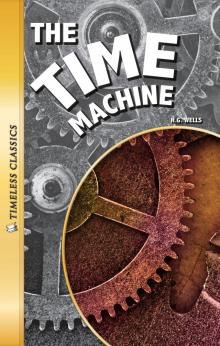 The Time Machine
The Time Machine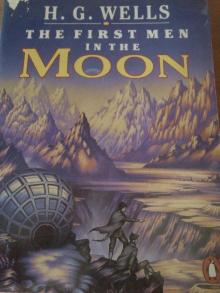 The First Men in the Moon
The First Men in the Moon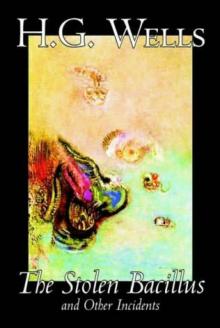 The Stolen Bacillus and Other Incidents
The Stolen Bacillus and Other Incidents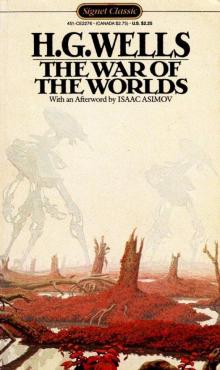 The War of the Worlds
The War of the Worlds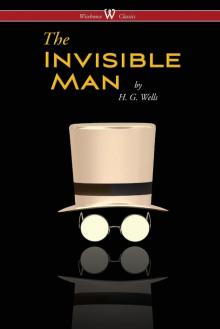 The Invisible Man: A Grotesque Romance
The Invisible Man: A Grotesque Romance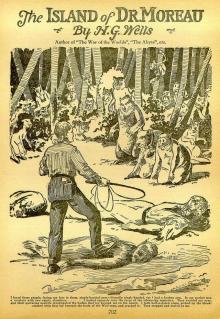 The Island of Doctor Moreau
The Island of Doctor Moreau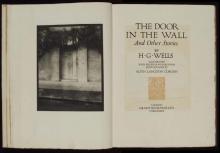 The Door in the Wall, and Other Stories
The Door in the Wall, and Other Stories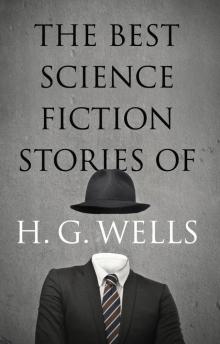 The Best Science Fiction Stories of H G Wells
The Best Science Fiction Stories of H G Wells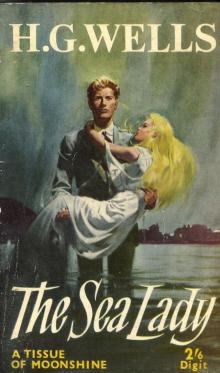 The Sea Lady
The Sea Lady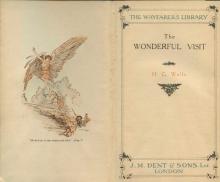 The Wonderful Visit
The Wonderful Visit Love and Mr. Lewisham
Love and Mr. Lewisham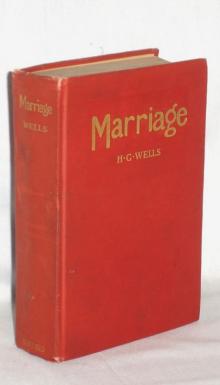 Marriage
Marriage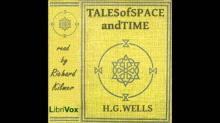 Tales of Space and Time
Tales of Space and Time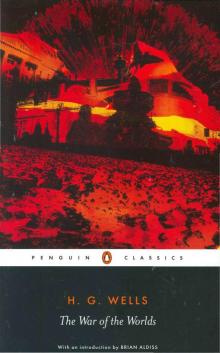 The War of the Worlds (Penguin Classics)
The War of the Worlds (Penguin Classics) Twelve Stories and a Dream
Twelve Stories and a Dream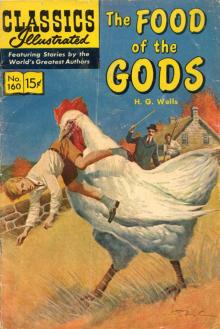 The Food of the Gods and How It Came to Earth
The Food of the Gods and How It Came to Earth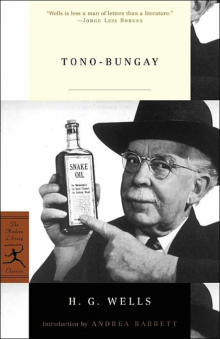 Tono-Bungay
Tono-Bungay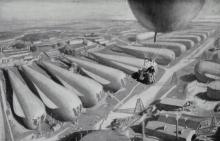 The War in the Air
The War in the Air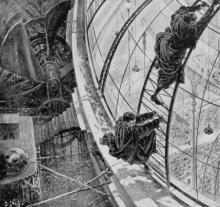 The Sleeper Awakes
The Sleeper Awakes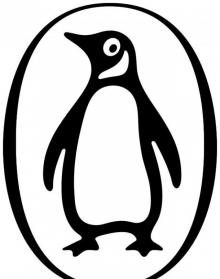 The Country of the Blind and Other Stories
The Country of the Blind and Other Stories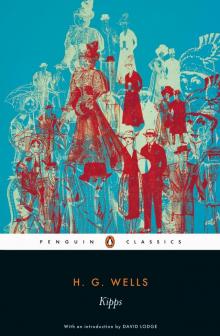 Kipps
Kipps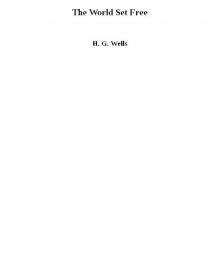 The World Set Free
The World Set Free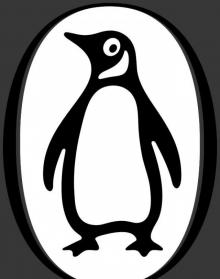 The Country of the Blind and other Selected Stories
The Country of the Blind and other Selected Stories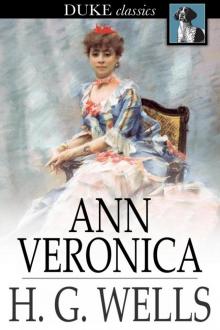 Ann Veronica
Ann Veronica Ann Veronica a Modern Love Story
Ann Veronica a Modern Love Story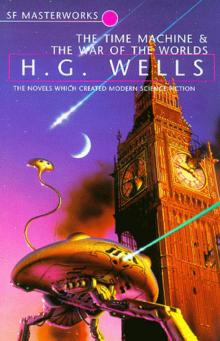 The Time Machine and The War of the Worlds
The Time Machine and The War of the Worlds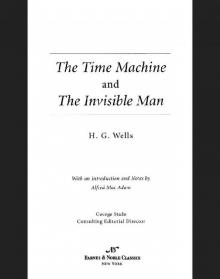 Time Machine and The Invisible Man (Barnes & Noble Classics Series)
Time Machine and The Invisible Man (Barnes & Noble Classics Series)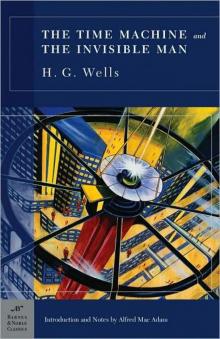 The Time Machine and The Invisible Man
The Time Machine and The Invisible Man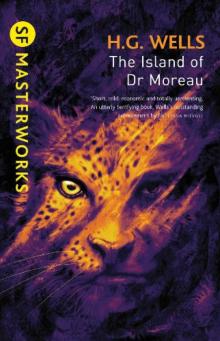 The Island of Dr. Moreau
The Island of Dr. Moreau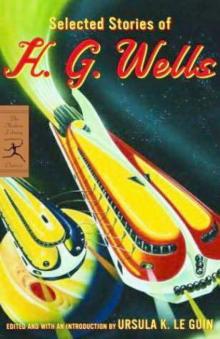 Selected Stories of H. G. Wells
Selected Stories of H. G. Wells Island of Dr. Moreau
Island of Dr. Moreau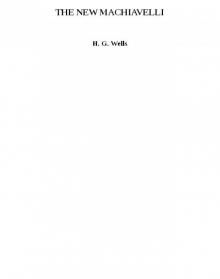 THE NEW MACHIAVELLI
THE NEW MACHIAVELLI